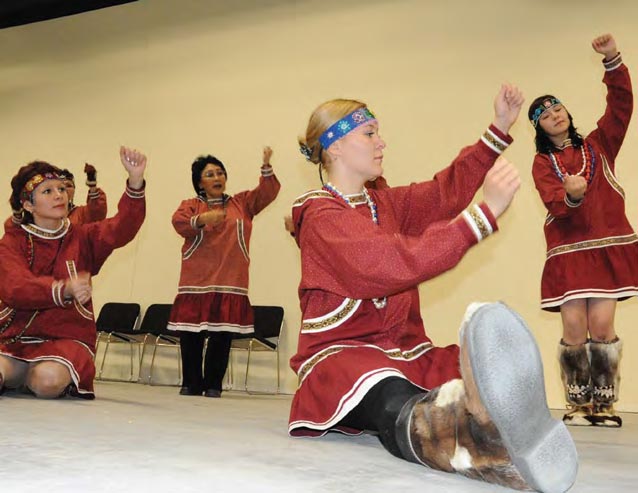
Greta Burkhart
Science and resource conservation are rarely simple undertakings in wild Alaska, and it does not get any easier in Siberia. The joys and challenges of working to understand and preserve natural and cul-tural heritage on both sides of the Bering Straight were “hot” topics when scientists, scholars, educators from the United States and Russia came together in Fairbanks, Alaska, in October 2008. Their venue was the first combined meeting of the Alaska Park Science Symposium and the Berin-gia Days International Conference. This highly successful bilingual Park Science in the Arctic event was the third in what is planned as a biennial series of National Park Service scientific symposia. Each of the symposia in this series has focused on specific geographic areas that encom-pass national parks and their associated programs in Alaska. The Alaska Park Science Symposium series attracts people with diverse knowledge and interests in scientific and scholarly topics relevant to these areas.
While 2008 marked the first time that these two NPS conferences came together as one, the Beringia Days International Conferences have been held since 1996 to recognize and celebrate the contemporary and historic value of the region’s shared ecological and cultural heritage. Berin-gia Days and the biennial Alaska Park Sci-ence Symposia provide important venues for cross-cultural sharing of information among scientists and scholars in multiple disciplines, educators, students, resource managers, and the interested public. Participants have consistently rated the informal opportunities for collegial networking, inter-disciplinary, and cross-cultural communication as among the most important program elements.
The theme of the fall 2008 Internation-al Polar Year symposium was the Natural and Cultural Heritage of Greater Beringia, a vast geographic area stretching from the Lena River in Siberia to the Mackenzie River in Canada, and from the North Pole to the Aleutian Islands. Some 200 scien-tists, resource managers, decision makers, educators, students, and local residents from both Alaska and Russia participated in the event. Their 100 oral and poster presentations covered a broad range of physical, biological, cultural, and social sciences and related topics that are especially relevant to the Gates of the Arctic, Noatak, Cape Krusenstern, Kobuk Valley, and the Beringian Heritage International Park Program. Numerous and diverse cultural program elements, including scholarly presentations and dances by Native performers from Fairbanks, Alaska, and Provedenia, Russia, facilitated recognition of cultural tradi-tions, subsistence lifestyles, and ecological knowledge. Several workshops and field trips also coincided with the symposium.
Watch for a selection of summary papers from the symposium in the Decem-ber 2009 issue of the Alaska Park Science journal. Future conferences on the natural and cultural heritage of Alaska and Russia’s Far East are also intended. Discussions are underway for the next Beringia Days International Conference to be held in Anadyr, Chukotka (Russia) in 2009, while Alaska Park Science Symposium planners are focusing on coastal parks and protected areas in Southwest Alaska in 2010.
More information about the 2008 Park Science in the Arctic event can be found at http://nps.arcus.org.
Part of a series of articles titled Alaska Park Science- Volume 8 Issue 1: Connections to Natural and Cultural Resource Studies in Alaska's National Parks.
Next: And the Wildlife Therein
Last updated: August 10, 2016
